
Mini-Reviews in Organic Chemistry
Scope & Guideline
Illuminating Trends in Organic Chemistry Research.
Introduction
Aims and Scopes
- Organic Synthesis and Methodology:
Focuses on novel synthetic methods and strategies, including multi-component reactions, organocatalysis, and the use of green chemistry principles. This area emphasizes advancements in the development of efficient and sustainable synthetic routes to complex organic molecules. - Biologically Active Compounds:
Explores the synthesis, biological activities, and pharmacological potentials of various organic compounds, particularly heterocycles and natural products. The journal highlights the significance of these compounds in drug discovery and therapeutic applications. - Material Chemistry and Nanotechnology:
Covers the development of organic materials and nanomaterials, including their applications in sensors, drug delivery systems, and environmental remediation. This area emphasizes the interdisciplinary nature of organic chemistry and its applications in modern technology. - Chemical Biology and Bioinorganic Chemistry:
Examines the interactions between organic compounds and biological systems, including the synthesis of biomolecules and their mechanisms of action. This scope includes studies on bioactive natural products and their synthetic analogs. - Environmental and Green Chemistry:
Addresses the development of sustainable practices in organic synthesis and the utilization of bio-based resources. The journal promotes research on environmentally friendly methodologies that minimize waste and reduce harmful effects on the environment.
Trending and Emerging
- Nanotechnology and Smart Materials:
Recent publications have increasingly focused on the synthesis and application of nanomaterials, particularly in drug delivery and environmental remediation. This trend highlights the integration of organic chemistry with nanotechnology to develop advanced materials with multifunctional capabilities. - Sustainable and Green Chemistry:
There is a growing emphasis on environmentally friendly synthetic methods and the use of renewable resources. Recent reviews discuss innovative green methodologies that reduce environmental impact, aligning with global sustainability goals. - Natural Products and Bioactivity:
An increasing number of papers are dedicated to the synthesis and biological evaluation of natural products and their derivatives. This trend underscores the importance of exploring the therapeutic potential of compounds derived from natural sources. - Electrochemical Synthesis and Functionalization:
Emerging themes in electrochemical synthesis highlight the development of new methodologies for functionalizing organic compounds. This trend reflects the increasing interest in using electrochemistry as a sustainable approach to organic synthesis. - Bioorthogonal Chemistry and Click Reactions:
There is a notable rise in interest in bioorthogonal reactions, which facilitate the labeling and tracking of biomolecules. This trend is particularly relevant in chemical biology and drug delivery, emphasizing the intersection of organic chemistry with biological applications.
Declining or Waning
- Traditional Organic Reactions:
There has been a noticeable decrease in reviews focusing solely on traditional organic reactions without novel applications or improvements. As the field evolves, there is a greater emphasis on innovative methodologies rather than established reaction pathways. - Pharmaceutical Chemistry of Established Drugs:
Research on established pharmaceutical compounds and their modifications seems to be waning. Instead, there is a shift towards exploring novel compounds and their potential in drug discovery rather than focusing on modifications of existing drugs. - Basic Theoretical Studies:
The journal has seen a decline in purely theoretical studies without experimental validation or practical applications. There is a growing preference for reviews that integrate theoretical approaches with experimental findings to provide more comprehensive insights. - Synthesis of Simple Organic Molecules:
There is a decreasing trend in reviews that cover the synthesis of relatively simple organic molecules. The focus is shifting towards more complex structures with significant biological activity or technological applications, reflecting the demand for innovative research. - Historical Perspectives on Organic Chemistry:
Papers that focus primarily on historical developments in organic chemistry have become less common. The current trend favors contemporary issues and advancements rather than retrospective analyses.
Similar Journals
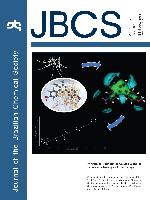
JOURNAL OF THE BRAZILIAN CHEMICAL SOCIETY
Unlocking Potential: A Hub for the Latest in Chemical ResearchThe Journal of the Brazilian Chemical Society (ISSN: 0103-5053; E-ISSN: 1678-4790), published by the Sociedade Brasileira de Química, stands as a prominent outlet for disseminating high-quality research in the field of chemistry. Since its establishment as an Open Access journal in 1990, it has been committed to providing unrestricted access to innovative findings and discussions that propel the advancement of chemical sciences globally. Located in the vibrant research landscape of Brazil, this journal aims to showcase a wide range of topics including analytical, organic, inorganic, and physical chemistry, among others, catering to a diverse audience of researchers, professionals, and students alike. The journal holds a noteworthy distinction with a Q3 quartile ranking in the field of miscellaneous chemistry for 2023 and is indexed in Scopus, reflecting its growing influence in the academic community. With a publication cycle that spans continuously from 1990 through 2024, it serves as a vital resource for anyone seeking to stay informed about the latest trends and breakthroughs in chemistry.
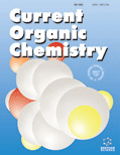
CURRENT ORGANIC CHEMISTRY
Exploring the Depths of Organic Chemistry KnowledgeCURRENT ORGANIC CHEMISTRY, published by Bentham Science Publishers, stands as a pivotal platform in the field of organic chemistry, providing innovative insights and advancements since its inception in 1997. With an ISSN of 1385-2728 and an E-ISSN of 1875-5348, this esteemed journal has carved a niche in the academic landscape, currently ranking in the Q3 category for Organic Chemistry according to the 2023 metrics. Operating from the United Arab Emirates, it engages a diverse audience of researchers, professionals, and students by delivering quality peer-reviewed articles that cover a broad spectrum of organic chemistry research. Although the journal does not offer open access, it remains a respected source of knowledge, indexed in Scopus with a percentile ranking of 43, encouraging rigorous discourse and the dissemination of cutting-edge findings. With continuous publication through 2024, CURRENT ORGANIC CHEMISTRY is dedicated to advancing the frontiers of organic chemistry research and technology.
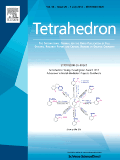
TETRAHEDRON
Exploring the molecular universe since 1957.TETRAHEDRON, published by Pergamon-Elsevier Science Ltd, is a leading peer-reviewed journal that has been pivotal in advancing the fields of Biochemistry, Drug Discovery, and Organic Chemistry since its inception in 1957. With an ISSN of 0040-4020 and an E-ISSN of 1464-5416, this journal provides a platform for the dissemination of cutting-edge research and innovative methodologies that contribute significantly to the scientific community. Recognized for its rigorous editorial standards, TETRAHEDRON has been categorized in the Q3 quartile for 2023 across its relevant fields, reflecting its solid impact within the scientific sphere. Despite the current absence of Open Access options, the journal continues to engage a diverse readership, offering invaluable insights and advancements that fuel both academic and industrial applications. With an ongoing commitment to excellence, TETRAHEDRON remains an essential resource for researchers, professionals, and students aiming to stay at the forefront of chemistry and biochemistry research.
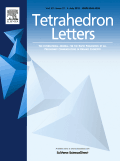
TETRAHEDRON LETTERS
Connecting Researchers with Cutting-Edge DiscoveriesTETRAHEDRON LETTERS, published by Pergamon-Elsevier Science Ltd, is a leading journal in the fields of Biochemistry, Drug Discovery, and Organic Chemistry, with a rich legacy since its inception in 1959. This prestigious journal serves as a vital resource for researchers and professionals dedicated to advancing the understanding of chemical sciences, featuring high-impact research that influences both academic and practical applications. Although it is currently classified in the third quartile across its categories for 2023, its rigorous peer-review process ensures the publication of quality research that contributes to the scientific community. With an ISSN of 0040-4039 and an E-ISSN of 1873-3581, TETRAHEDRON LETTERS is easily accessible for those in the academic landscape seeking to stay abreast of innovative developments. Researchers, professionals, and students alike will find invaluable insights and collaborative opportunities within the pages of TETRAHEDRON LETTERS, making it an essential read for anyone involved in the chemical sciences.

EUROPEAN JOURNAL OF ORGANIC CHEMISTRY
Exploring the Depths of Organic and Theoretical ChemistryThe EUROPEAN JOURNAL OF ORGANIC CHEMISTRY (ISSN: 1434-193X; E-ISSN: 1099-0690), published by WILEY-V C H VERLAG GMBH in Germany, stands as a crucial platform for disseminating innovative research in the fields of organic, physical, and theoretical chemistry. With its inception dating back to 1998 and converging expertise until 2024, this esteemed journal has achieved a notable reputation, earning a Q2 rank in both Organic Chemistry and Physical and Theoretical Chemistry categories as of 2023, indicating its vital contribution to the academic community. Researchers and professionals will benefit from its rigorous peer-reviewed articles, which foster advancement in chemical sciences, while students can leverage its wealth of knowledge to enhance their learning. Although currently not an open-access journal, the content produced is invaluable for those looking to stay at the forefront of chemical research.
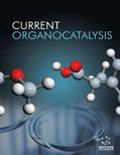
Current Organocatalysis
Exploring New Horizons in CatalysisCurrent Organocatalysis is a premier academic journal dedicated to the dynamic field of organocatalysis, published by Bentham Science Publishers, Ltd. Based in the United Arab Emirates, this journal has been a valuable resource for researchers since its inception in 2014 and will continue to publish impactful articles until 2024. The journal provides a platform for sharing groundbreaking research, reviews, and insights that significantly contribute to the fields of Analytical Chemistry, Catalysis, and Organic Chemistry. With a Q4 ranking in several chemistry categories, it identifies and disseminates emerging strategies and methodologies in organocatalysis, promoting collaboration and advancement in the community. While it operates on a subscription basis, the journal ensures accessible content for its audience to further supplement academic learning and professional development. Researchers, professionals, and students are encouraged to explore and contribute to this critical field, leveraging the journal as an essential resource for the latest trends and innovations in organocatalysis.

BIOORGANIC & MEDICINAL CHEMISTRY LETTERS
Innovating drug discovery through biochemistry insights.BIOORGANIC & MEDICINAL CHEMISTRY LETTERS, published by PERGAMON-ELSEVIER SCIENCE LTD, is a leading journal in the fields of biochemistry, drug discovery, and medicinal chemistry, designed to disseminate significant advances in these disciplines. Established in 1991, the journal spans various important categories, including Organic Chemistry and Pharmaceutical Science, with its 2023 Scimago Journal Rank placing it at Q2 in Organic Chemistry and Q3 in several other relevant fields. Though not an open-access publication, it provides invaluable insights into contemporary research and innovative methodologies, appealing to researchers, professionals, and students alike. The journal's commitment to quality and relevance makes it a vital resource for those aiming to stay at the forefront of bioorganic and medicinal chemistry developments. For more information, please visit the journal's website as it remains a critical platform for scholarly exchange, particularly for those engaged in interdisciplinary research.

Asian Journal of Organic Chemistry
Exploring the depths of organic chemistry excellence.Asian Journal of Organic Chemistry, published by WILEY-V C H VERLAG GMBH, stands as a pivotal platform in the realm of organic chemistry, catering to researchers and professionals eager to share their contributions to the field. With an ISSN of 2193-5807 and E-ISSN of 2193-5815, this journal spans a commendable convergence from 2012 to 2024, featuring a notable impact factor highlighted by its Q2 ranking in the 2023 Organic Chemistry category. Positioned at rank #94 out of 211 in Scopus, the journal emphasizes the importance of quality research and innovation in organic chemistry. The lack of open access enhances the journal's selectivity, ensuring only the most rigorous and impactful studies are published. Serving as a vital resource for scholars, students, and practitioners alike, the Asian Journal of Organic Chemistry fosters the dissemination of knowledge, advances academic dialogue, and reinforces the pivotal role of organic chemistry in scientific advancement.

SYNTHETIC COMMUNICATIONS
Catalyzing Collaboration in Organic Chemistry ResearchSynthetic Communications, published by Taylor & Francis Inc, stands as a pivotal resource in the field of organic chemistry since its inception in 1971. With an ISSN of 0039-7911 and an E-ISSN of 1532-2432, this journal has established a commendable reputation, holding a Q3 ranking in organic chemistry by 2023, reflecting its contributions to the discipline and positioning it within the 50th percentile according to Scopus rankings. Targeted towards researchers, professionals, and students alike, Synthetic Communications aims to disseminate significant advancements in synthetic methodologies and reactions, facilitating the exchange of innovative ideas and enhancing collaborative efforts in the scientific community. Although not an open-access journal, it offers a wealth of valuable research content that is crucial for anyone dedicated to pushing the boundaries of organic chemistry.

ORGANIC PREPARATIONS AND PROCEDURES INTERNATIONAL
Catalyzing Discoveries in Organic Chemistry Since 1971ORGANIC PREPARATIONS AND PROCEDURES INTERNATIONAL is a prominent journal in the field of organic chemistry, published by Taylor & Francis Inc. With an ISSN of 0030-4948 and an E-ISSN of 1945-5453, this journal has been a vital resource for researchers since its inception in 1971, showcasing a broad range of methodologies, protocols, and innovative applications within organic synthesis. Although categorized in the Q4 quartile for organic chemistry, the journal provides a critical platform for researchers at all levels to disseminate their findings and to access a wealth of practical organic procedures. It currently ranks #151 out of 211 in the Scopus Organic Chemistry category, underscoring its role in advancing the discipline despite its relatively modest impact factor. The journal offers a diverse collection of scholarly articles that are essential for both professional chemists and students, enriching their understanding of organic preparation techniques. Inviting contributions that encompass the full spectrum of organic synthesis, this journal serves as a valuable conduit for knowledge exchange in the ever-evolving field of organic chemistry.